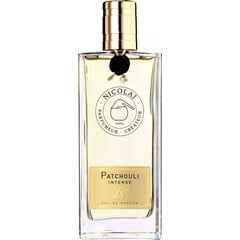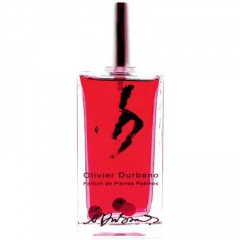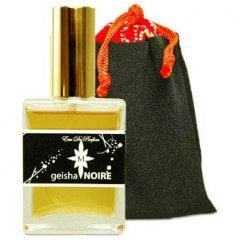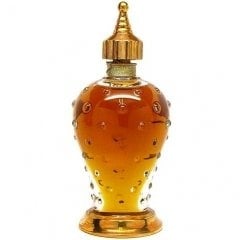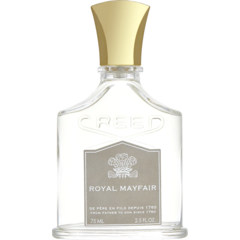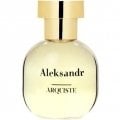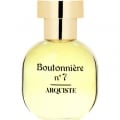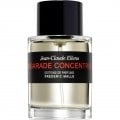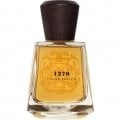
Flaconneur
Reviews
Filter & sort
PATCHOULI INTENSE by Parfums de Nicolaï
Patchouli Homme's popularity among men remains quite solid. This fragrance gained increasing interest with women shortly after its introduction in 2009. Women's discovery of Patchouli Homme's unisex nature, and the subsequent popularity it generated, has caused Parfum de Nicolaï to rename the fragrance Patchouli Intense. Removing "Homme" from the name will allow the marketing of the fragrance to both genders without exclusion. I'm giving you fair warning: Patchouli Homme, now Patchouli Intense, is not your typical heady patchouli.
Patchouli Intense has Patricia de Nicolaï's widely recognized signature opening of candied orange – sweet, yet sophisticated. This creation benefits from Nicolaï being a member of the famous Guerlain perfumer family. A sharp, proper, Victorian-styled lavender fraternizes with the sweet, candied orange, creating a satisfying fruity herbal blend. The balance of this opening is sprinkled with spicy cinnamon, generating the illusion of a mild masculine demeanor. Pelargonium is cleverly used as a intermediary between the top and heart notes. This dainty flower has a rose-like nature and occasional citrus overtones. It is the perfect introduction to a vibrant, yet understated rose heart. This rose is Turkish, fresh, subtly green, spicy and ever so softly sweet. Finally, patchouli makes its stage debut, alongside its collaborators rose and sandalwood. This sometimes dangerous trio can result in the typical heady aroma negatively associated with patchouli-based fragrances. The patchouli in Patchouli Intense is alive and energetic without the usual dank and depressing sentiment. This lively energy is what really drew me in when first catching a whiff of Patchouli Intense. The intrinsic fresh and green nature of this patchouli makes the heart of Patchouli Intense shine. Just a touch of warming amber and a light smoky leatheriness give this fragrance just the right amount of character without spoiling its energetic nature. "Where is the patchouli?" has been a frequently asked question by others sampling Patchouli Intense. Rest assured, the patchouli is there and cleverly concealed behind a sheer veil of rose, fused with a woody Oriental base. I know that for some, it's incredibly hard to recognize patchouli when it doesn't smell like a dungeon.
I have been searching for a patchouli fragrance that was distinct and unconventional. The satisfaction that Patchouli Intense brings makes me believe that my search is over. (That is until the next great patchouli creation comes along.) Patchouli Intense has filled the chasm in a valley of hippy dippy, run-of-the-mill, mucky patchouli fragrances. This is a satisfying daytime fragrance but also just as adaptable for a casual evening situation. The longevity of Patchouli Intense is amazing, lasting over 12 hours without giving up on it freshness or bright character. Patchouli Intense remains a favorite with patchouli lovers, both men and women alike, and will probably remain just as popular regardless of its new identity.
Patchouli Intense has Patricia de Nicolaï's widely recognized signature opening of candied orange – sweet, yet sophisticated. This creation benefits from Nicolaï being a member of the famous Guerlain perfumer family. A sharp, proper, Victorian-styled lavender fraternizes with the sweet, candied orange, creating a satisfying fruity herbal blend. The balance of this opening is sprinkled with spicy cinnamon, generating the illusion of a mild masculine demeanor. Pelargonium is cleverly used as a intermediary between the top and heart notes. This dainty flower has a rose-like nature and occasional citrus overtones. It is the perfect introduction to a vibrant, yet understated rose heart. This rose is Turkish, fresh, subtly green, spicy and ever so softly sweet. Finally, patchouli makes its stage debut, alongside its collaborators rose and sandalwood. This sometimes dangerous trio can result in the typical heady aroma negatively associated with patchouli-based fragrances. The patchouli in Patchouli Intense is alive and energetic without the usual dank and depressing sentiment. This lively energy is what really drew me in when first catching a whiff of Patchouli Intense. The intrinsic fresh and green nature of this patchouli makes the heart of Patchouli Intense shine. Just a touch of warming amber and a light smoky leatheriness give this fragrance just the right amount of character without spoiling its energetic nature. "Where is the patchouli?" has been a frequently asked question by others sampling Patchouli Intense. Rest assured, the patchouli is there and cleverly concealed behind a sheer veil of rose, fused with a woody Oriental base. I know that for some, it's incredibly hard to recognize patchouli when it doesn't smell like a dungeon.
I have been searching for a patchouli fragrance that was distinct and unconventional. The satisfaction that Patchouli Intense brings makes me believe that my search is over. (That is until the next great patchouli creation comes along.) Patchouli Intense has filled the chasm in a valley of hippy dippy, run-of-the-mill, mucky patchouli fragrances. This is a satisfying daytime fragrance but also just as adaptable for a casual evening situation. The longevity of Patchouli Intense is amazing, lasting over 12 hours without giving up on it freshness or bright character. Patchouli Intense remains a favorite with patchouli lovers, both men and women alike, and will probably remain just as popular regardless of its new identity.
2 Comments
HÉLIOTROPE by Olivier Durbano
Could it be that Héliotrope by Olivier Durbano deviates from his normal repertoire of gemstone inspired fragrances? Not so much. Most of us are aware of a flower called heliotrope, but there is also a mineral known by the same name, otherwise called bloodstone. The mineral form is usually green in color, with brightly colored red inclusions that resemble blood spots, hence the name bloodstone. Just when you think that Durbano has turned over a new leaf, or stone in this case, we are right back to his original love of gemstones and minerals. Héliotrope is a pleasant surprise for Durbano's Bijoux de Pierres Poemes collection.
Héliotrope opens energetically with a spicy profusion of chili pepper, ginger and angelica root, along with a splash of racy red mandarin. Just as this intensely colored perfume implies, the fragrance has a fiery nature right from the start. To further intrigue, Héliotrope is laden with smoldering incense and resins. Smoky incense is a common thread running through all of Olivier Durbano's fragrance. Incense is a welcome meditative accompaniment for such a vivacious concoction. You might take notice of a few conspicuous peppercorns sitting in the bottom of the bottle. They are a gentle suggestion of the spirited personality within Héliotrope. Durbano's fragrances have been known to include notes that have a medicinal or piney accord, and I'm uncertain as to their origin. Disconcerting at first, this antisepticness settles into the fragrance just in time for the heart's floral pageant. While the linear spicy parade marches on, the heart initiates with a pleasurable blend of flowers. There's vanilla-like heliotrope, citrusy magnolia and pleasant, woody, earthy nagarmotha with its cinnamon and frankincense traces. All of these beautiful florals unite perfectly with a warm, cozy saffron, giving the heart of Héliotrope a subtle Oriental vibe. The base of Héliotrope is rooted in incense, musk, woods and amber. This is a perfect balance for this spicy floral potion giving it substance and a morsel of complexity.
I was unsure about my opinion of Héliotrope upon first testing. Eventually, I found it to be soothing, like a nice hot toddy accompanied by a roaring fire. The spice suggests neither masculine nor feminine, and is a bit predictable from start to finish. Longevity is very good, and it lasted the entire day. While you may not expect much from these "jewelry designer one minute, perfumer the next," types, Durbano's newest offering is a pleasant surprise.
Héliotrope opens energetically with a spicy profusion of chili pepper, ginger and angelica root, along with a splash of racy red mandarin. Just as this intensely colored perfume implies, the fragrance has a fiery nature right from the start. To further intrigue, Héliotrope is laden with smoldering incense and resins. Smoky incense is a common thread running through all of Olivier Durbano's fragrance. Incense is a welcome meditative accompaniment for such a vivacious concoction. You might take notice of a few conspicuous peppercorns sitting in the bottom of the bottle. They are a gentle suggestion of the spirited personality within Héliotrope. Durbano's fragrances have been known to include notes that have a medicinal or piney accord, and I'm uncertain as to their origin. Disconcerting at first, this antisepticness settles into the fragrance just in time for the heart's floral pageant. While the linear spicy parade marches on, the heart initiates with a pleasurable blend of flowers. There's vanilla-like heliotrope, citrusy magnolia and pleasant, woody, earthy nagarmotha with its cinnamon and frankincense traces. All of these beautiful florals unite perfectly with a warm, cozy saffron, giving the heart of Héliotrope a subtle Oriental vibe. The base of Héliotrope is rooted in incense, musk, woods and amber. This is a perfect balance for this spicy floral potion giving it substance and a morsel of complexity.
I was unsure about my opinion of Héliotrope upon first testing. Eventually, I found it to be soothing, like a nice hot toddy accompanied by a roaring fire. The spice suggests neither masculine nor feminine, and is a bit predictable from start to finish. Longevity is very good, and it lasted the entire day. While you may not expect much from these "jewelry designer one minute, perfumer the next," types, Durbano's newest offering is a pleasant surprise.
GEISHA NOIRE by Aroma M
The Aroma M company was created by artist Maria McElroy in 1998. A native of Salt Lake City, Utah, she attended the San Francisco Art Institute in San Francisco, California. During her attendance there, she found herself captivated by Asian abstract paintings. She moved to Japan after completing her education and spent several years there studying the art of fragrance and many other Japanese cultural esthetics. These studies gave her a well-rounded experience for her future pursuits in perfumery. Geisha Noire eau de parfum is an adaptation from the Aroma M's popular perfume oil of the same name. While the strength is slightly reduced, the end result is the satisfyingly same. Just as the cultural icon that inspired this fragrance creation, Geisha Noire eau de parfum is a delicate, comforting amber confection that entertains the senses.
The success of Geisha Noire is built on the simple construction of three notes, black amber, sandalwood and tonka bean. The Japanese culture esteems the concept of simplicity, so Maria McElroy's strategy seems completely appropriate. Sandalwood plays a key element in Japanese culture. You will find sandalwood incense commonplace in Japanese religious ceremonies as well as a means for Buddhists to maintain a person's alertness during meditation. McElroy studied incense ceremonies for several years in Japan, so she seems quite experienced with the concept. The smell of sandalwood, whether natural or burnt as incense, is slightly resinous, woody and simply celestial. The sandalwood in Geisha Noire is not freshly cut but slightly antique, mysterious and dark. There is a powdery element present in Geisha Noire that seems appropriate in honor of the snowy faced Geisha culture. Similar to the monochromatic presentation for the face and hair of the Geisha, this powdery element in one-dimensional but necessary to complete the fragrance's Oriental disposition. Visually, the Geisha are like exotically colored birds. Their garb has captured the interest and imagination of the western world for decades. While their mythical outward appearance is doll-like and seems to lack a certain humanness, their sweetness is achieved by their colorful attire. Geisha Noire derives a satisfying sweetness from the careful use of the vanilla-like persona of Tonka bean. This sweet note blends naturally with woody sandalwood making the merger smooth and silky. Black amber is the final key component in Geisha Noire's sweet but deeply cozy nature. Like the allegorical and ominous landscapes of Japan, black amber introduces a sculptural element not unlike the carefully pruned trees of a Japanese garden. There is also a sensual element reminiscent of the softly rolling mountains of Japan. Black amber is a slightly heavy, but rich, element that concludes this Oriental accord. The dry down in Geisha Noire is warm, comforting and sensual, which makes it a perfectly appropriate fragrance for night.
The presentation of the Aroma M products keeps in tune with their Oriental inspired roots. The products are presented in a black, kimono-like drawstring pouch. Some of the bottles are decorated in beautiful papers that are like miniature Japanese paintings. Other more colorful and beautifully-made fabric pouches can be purchased separately from the Aroma M online store, if so desired.
Some have said that they can detect vague echoes of Shalimar in Geisha Noire. This fragrance is more simply constructed with a less aggressive bad girl personality. Geisha Noire eau de parfum is much like the Geisha themselves. This fragrance is quiet, somewhat reserved but slightly exotic, and always capable of keeping one entertained.
The success of Geisha Noire is built on the simple construction of three notes, black amber, sandalwood and tonka bean. The Japanese culture esteems the concept of simplicity, so Maria McElroy's strategy seems completely appropriate. Sandalwood plays a key element in Japanese culture. You will find sandalwood incense commonplace in Japanese religious ceremonies as well as a means for Buddhists to maintain a person's alertness during meditation. McElroy studied incense ceremonies for several years in Japan, so she seems quite experienced with the concept. The smell of sandalwood, whether natural or burnt as incense, is slightly resinous, woody and simply celestial. The sandalwood in Geisha Noire is not freshly cut but slightly antique, mysterious and dark. There is a powdery element present in Geisha Noire that seems appropriate in honor of the snowy faced Geisha culture. Similar to the monochromatic presentation for the face and hair of the Geisha, this powdery element in one-dimensional but necessary to complete the fragrance's Oriental disposition. Visually, the Geisha are like exotically colored birds. Their garb has captured the interest and imagination of the western world for decades. While their mythical outward appearance is doll-like and seems to lack a certain humanness, their sweetness is achieved by their colorful attire. Geisha Noire derives a satisfying sweetness from the careful use of the vanilla-like persona of Tonka bean. This sweet note blends naturally with woody sandalwood making the merger smooth and silky. Black amber is the final key component in Geisha Noire's sweet but deeply cozy nature. Like the allegorical and ominous landscapes of Japan, black amber introduces a sculptural element not unlike the carefully pruned trees of a Japanese garden. There is also a sensual element reminiscent of the softly rolling mountains of Japan. Black amber is a slightly heavy, but rich, element that concludes this Oriental accord. The dry down in Geisha Noire is warm, comforting and sensual, which makes it a perfectly appropriate fragrance for night.
The presentation of the Aroma M products keeps in tune with their Oriental inspired roots. The products are presented in a black, kimono-like drawstring pouch. Some of the bottles are decorated in beautiful papers that are like miniature Japanese paintings. Other more colorful and beautifully-made fabric pouches can be purchased separately from the Aroma M online store, if so desired.
Some have said that they can detect vague echoes of Shalimar in Geisha Noire. This fragrance is more simply constructed with a less aggressive bad girl personality. Geisha Noire eau de parfum is much like the Geisha themselves. This fragrance is quiet, somewhat reserved but slightly exotic, and always capable of keeping one entertained.
2 Comments
POIVRÉ by Caron
Created by Michel Morsetti for Caron, Poivré pushed quite a few boundaries with its introduction in 1954. It was definitely a departure from the pretty floral chypre fragrances created for women during the 1950's. There is no confusion regarding Poivré's intention. This perfume has the temperament of a searing red hot poker and the charisma of a roaring fire. Poivré's personality is intensionally aggressive, spicy and perfect for the spice enthusiast. To many people's dismay, Poivré's fell victim to reformulated in 1997 due to IFRA restrictions. While having a reduced intensity of spiciness, the current production of Poivré can be viewed by some as slightly less interesting than its predecessor. Nevertheless, it is still one of the most intriguing in the Caron line today.
What better way to launch Poivré than with a shrewd combination of clove and red pepper. Straight out of the gate, Poivré is quite a treat for the olfactory senses. This savory, yet racy concoction is deliberately blended to be fiery. Poivré's heart launches with an interestingly rich floral twist featuring carnation, rose, ylang-ylang, and jasmine. Carnations naturally have a spicy scent but the spiciness tinges the flower without masking the underlying sweet floral quality. The addition of rose works out to be the perfect companion to the spicy nature of the carnation. Some rose varieties can be inherently spicy. The rose also necessitates a balance of subtle sweetness and exotic qualities that the carnation can sometimes lacks. Ylang-Ylang and jasmine share similar dramatic characteristics and play off each other well, which amps up the floral intensity slightly. The carnation takes the part of the usher, insuring the floral accord is a successful one. Poivré's base is woody and expectedly Oriental. The base commences with oak moss, directing Poivré towards having guaranteed Oriental undertones. The slightly resinous and herbal opopanax is the perfect companion to sandalwood with its smooth and luxurious character. The vetiver here is nothing but a nod to the herbal suggestion made during the base's introduction.
Poivré is not for the faint of heart. If spicy Orientals are not your cup of tea, I would suggest steering clear of this fiery dragon. On the other hand, if you love spicy fragrances, Poivré will hit the spot. Created for women but eventually loved by men just as vehemently, Poivré is an interesting creation that few seem to be able to resist. The longevity of the Extract de Parfum is amazing and sillage was still noticeable after 14 hours. I think Poivré leans to the masculine side of the perfume spectrum. It does so in the say way that Caron's other legendary creation, Tabac Blonde, does with a heavy-handed suggestion of huskiness.
What better way to launch Poivré than with a shrewd combination of clove and red pepper. Straight out of the gate, Poivré is quite a treat for the olfactory senses. This savory, yet racy concoction is deliberately blended to be fiery. Poivré's heart launches with an interestingly rich floral twist featuring carnation, rose, ylang-ylang, and jasmine. Carnations naturally have a spicy scent but the spiciness tinges the flower without masking the underlying sweet floral quality. The addition of rose works out to be the perfect companion to the spicy nature of the carnation. Some rose varieties can be inherently spicy. The rose also necessitates a balance of subtle sweetness and exotic qualities that the carnation can sometimes lacks. Ylang-Ylang and jasmine share similar dramatic characteristics and play off each other well, which amps up the floral intensity slightly. The carnation takes the part of the usher, insuring the floral accord is a successful one. Poivré's base is woody and expectedly Oriental. The base commences with oak moss, directing Poivré towards having guaranteed Oriental undertones. The slightly resinous and herbal opopanax is the perfect companion to sandalwood with its smooth and luxurious character. The vetiver here is nothing but a nod to the herbal suggestion made during the base's introduction.
Poivré is not for the faint of heart. If spicy Orientals are not your cup of tea, I would suggest steering clear of this fiery dragon. On the other hand, if you love spicy fragrances, Poivré will hit the spot. Created for women but eventually loved by men just as vehemently, Poivré is an interesting creation that few seem to be able to resist. The longevity of the Extract de Parfum is amazing and sillage was still noticeable after 14 hours. I think Poivré leans to the masculine side of the perfume spectrum. It does so in the say way that Caron's other legendary creation, Tabac Blonde, does with a heavy-handed suggestion of huskiness.
WINDSOR (2009, 2010) by Creed
Windsor is probably one of the most interesting rose fragrances introduced to the niche perfume marketplace. It is coveted by fragrance enthusiasts and held in very high regard for its intriguing floral structure. In fragrance circles some believe that Creed seems to have created a gem up until the second issue of Windsor in 2010. There has been much debate about the reasoning behind the second issue of Windsor and why this fragrance’s note structure is slightly different then the 2009 release. Creed does claim that they only use the finest of natural materials to make their fragrances and at times, use this as a crutch when accused of modifying formulas. Many of us understand that there can be subtle differences from one crop season to the next. These differences can directly effect the end product and the way in which the notes are perceived. The subtle differences between the two issues are significant enough to some to cause endless comparisons and debates.
Creed presents the story of Windsor as a fragrance originally created in 1936 for King Edward VIII, also known as the Duke of Windsor. The general attitude or concept of this fragrance followed his philosophy, “Royalty need not shout.” The fragrance’s notes were a collection of scents grown in the specific regions of the King’s rule. The notes are Jamaican Lime, British Gin, Scottish Highland Pine, Duke of Windsor Roses, Bahamian Orange, Canadian Cedar, Australian Eucalyptus. The story has it that Windsor was delivered to the king just before his resigning the throne to marry American divorcee Wallis Simpson. Now known as The Duke of Windsor, Edward wore the fragrance as he traveled with his wife participating in social events. The Windsor 2009 issue was a very limited production. There were only 320 1.7oz leather-wrapped shatterproof travel atomizers and 70 8.4oz flacons offered for sale in the U.S. through Saks Fifth Avenue. The flacons were signed by the sixth-generation master perfumer Olivier Creed.
The Windsor 2009 edition opens sharply with essence of gin, lime and pine. The lime and pine top notes are quite refreshing but fleeting. Underneath, just as the citrus fades, you start to sense a light green note, perhaps a bit medicinal but green and herbal nonetheless. I vaguely detect a hint of rose in the end of top notes but am mostly mesmerized by the cedar and eucalyptus notes coming up in the background. The green accord wavers in and out under the rose as the it matures. It is not until the base notes appear more robustly does the rose seems to increase in strength and blend beautifully with the cedar and eucalyptus. Windsor only gets better with time. The rose, cedar and eucalyptus notes mellow and are warm and intoxicating. The woody cedar base makes the rose here a bit masculine. The eucalyptus displays itself as a fresh green note, supporting the green accord that first appeared at the end of the top notes keeping this rose fresh, green and vibrant. The base nestles into a warm woodsy fragrance with just a touch of eucalyptus, keeping this floral interesting. This particular combination is a very masculine and quite beautiful.
Windsor 2010 is a slightly different Windsor in a few ways. I can only describe the opening in one word, disappointing. I guess my response might have been different if I hadn’t experienced Windsor 2009. But because I have, I was expecting similar results considering the name of the fragrance was retained. There is absolutely no boozy gin and lime citrus blast. The rose heart note moves in quickly. It’s interesting that Creed still classifies this release as a “Citrus/Green” fragrance. The opening of Windsor 2010 is completely linear and smells exactly like the dry down of the 2009 release straight out of the flacon. The top or heart notes do not evolve though a green floral phase as in the 2009 release. Once Windsor 2010 is in the dry down phase, it is very similar to the 2009 release and you virtually cannot tell the two apart. So why am I so disappointed if in the end, the fragrance’s dry down is the same? I find the missing fresh green accords to be the downfall of Windsor 2010. The fresh green, herbal florals are what gave Windsor interest and dimension. The rose note in Windsor 2010 seems sweeter and more tuberose. The combination of fresh green notes is also what made the rose heart of Windsor more masculine. The 2010 release, in my opinion, definitely leans towards the more feminine side of rose without the eucalyptus and pine. It also come straight out of the gate as dried down Windsor 2009, very linear, not very interesting and well, a bit boring.
Even though I was not very impressed with the Windsor 2010 release, I must admit that it still is a world class rose fragrance. I believe that Windsor 2010 is more unisex and may have more appeal to the female customer who might have thought the eucalyptus notes in Windsor 2009 were too medicinal or too piney. There were many people who purchased the 2010 release expecting it to be the same as the 2009 release. There have been endless conversations in the fragrance community to which release was better composed or which release had higher quality ingredients. In the end, Windsor 2009 and 2010 dry down to virtually the same fragrance and perhaps that’s all that Creed was concerned with.
Creed presents the story of Windsor as a fragrance originally created in 1936 for King Edward VIII, also known as the Duke of Windsor. The general attitude or concept of this fragrance followed his philosophy, “Royalty need not shout.” The fragrance’s notes were a collection of scents grown in the specific regions of the King’s rule. The notes are Jamaican Lime, British Gin, Scottish Highland Pine, Duke of Windsor Roses, Bahamian Orange, Canadian Cedar, Australian Eucalyptus. The story has it that Windsor was delivered to the king just before his resigning the throne to marry American divorcee Wallis Simpson. Now known as The Duke of Windsor, Edward wore the fragrance as he traveled with his wife participating in social events. The Windsor 2009 issue was a very limited production. There were only 320 1.7oz leather-wrapped shatterproof travel atomizers and 70 8.4oz flacons offered for sale in the U.S. through Saks Fifth Avenue. The flacons were signed by the sixth-generation master perfumer Olivier Creed.
The Windsor 2009 edition opens sharply with essence of gin, lime and pine. The lime and pine top notes are quite refreshing but fleeting. Underneath, just as the citrus fades, you start to sense a light green note, perhaps a bit medicinal but green and herbal nonetheless. I vaguely detect a hint of rose in the end of top notes but am mostly mesmerized by the cedar and eucalyptus notes coming up in the background. The green accord wavers in and out under the rose as the it matures. It is not until the base notes appear more robustly does the rose seems to increase in strength and blend beautifully with the cedar and eucalyptus. Windsor only gets better with time. The rose, cedar and eucalyptus notes mellow and are warm and intoxicating. The woody cedar base makes the rose here a bit masculine. The eucalyptus displays itself as a fresh green note, supporting the green accord that first appeared at the end of the top notes keeping this rose fresh, green and vibrant. The base nestles into a warm woodsy fragrance with just a touch of eucalyptus, keeping this floral interesting. This particular combination is a very masculine and quite beautiful.
Windsor 2010 is a slightly different Windsor in a few ways. I can only describe the opening in one word, disappointing. I guess my response might have been different if I hadn’t experienced Windsor 2009. But because I have, I was expecting similar results considering the name of the fragrance was retained. There is absolutely no boozy gin and lime citrus blast. The rose heart note moves in quickly. It’s interesting that Creed still classifies this release as a “Citrus/Green” fragrance. The opening of Windsor 2010 is completely linear and smells exactly like the dry down of the 2009 release straight out of the flacon. The top or heart notes do not evolve though a green floral phase as in the 2009 release. Once Windsor 2010 is in the dry down phase, it is very similar to the 2009 release and you virtually cannot tell the two apart. So why am I so disappointed if in the end, the fragrance’s dry down is the same? I find the missing fresh green accords to be the downfall of Windsor 2010. The fresh green, herbal florals are what gave Windsor interest and dimension. The rose note in Windsor 2010 seems sweeter and more tuberose. The combination of fresh green notes is also what made the rose heart of Windsor more masculine. The 2010 release, in my opinion, definitely leans towards the more feminine side of rose without the eucalyptus and pine. It also come straight out of the gate as dried down Windsor 2009, very linear, not very interesting and well, a bit boring.
Even though I was not very impressed with the Windsor 2010 release, I must admit that it still is a world class rose fragrance. I believe that Windsor 2010 is more unisex and may have more appeal to the female customer who might have thought the eucalyptus notes in Windsor 2009 were too medicinal or too piney. There were many people who purchased the 2010 release expecting it to be the same as the 2009 release. There have been endless conversations in the fragrance community to which release was better composed or which release had higher quality ingredients. In the end, Windsor 2009 and 2010 dry down to virtually the same fragrance and perhaps that’s all that Creed was concerned with.

 Flaconneur
Flaconneur